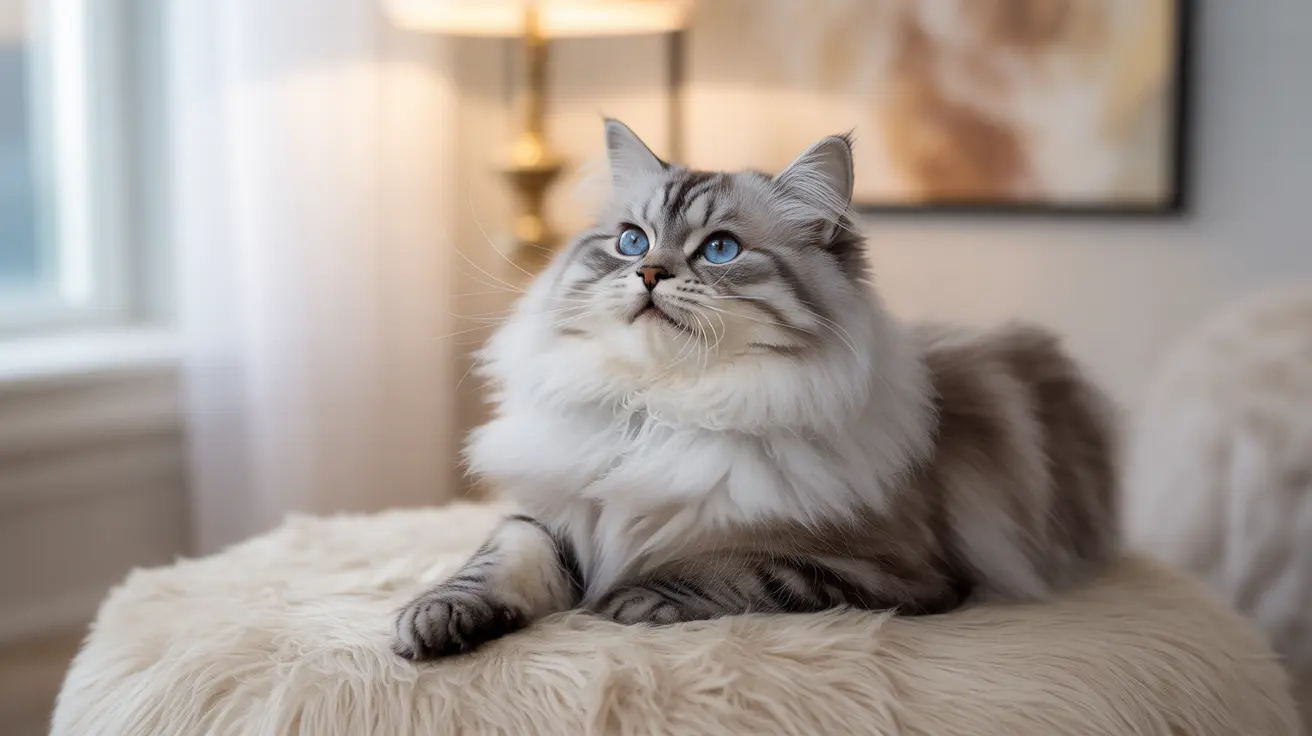The Biology Behind Feline Touch Preferences
Cats have developed specialized sensory receptors throughout their bodies, with certain areas being particularly sensitive to touch. The face, especially around the cheeks and chin, contains numerous scent glands and nerve endings that make gentle stroking especially pleasurable for most cats.
This biological setup isn't just about pleasure – it serves important evolutionary purposes. When cats rub against objects or receive strokes in these areas, they're simultaneously marking their territory with pheromones and engaging in social bonding behaviors inherited from their wild ancestors.
The Mother-Kitten Connection
Early life experiences significantly influence a cat's attitude toward being stroked. Kittens receive extensive grooming from their mothers, creating positive associations with gentle touch that often last throughout their lives. This maternal grooming behavior, known as allogrooming, helps explain why many adult cats continue to enjoy being petted in similar patterns.
Popular Petting Zones Explained
- Cheeks and chin: Rich in scent glands and usually well-received
- Behind the ears: Often a favorite spot due to dense nerve endings
- Along the back: Generally safe but watch for signs of overstimulation
- Base of tail: Can be either loved or strongly disliked, depending on the cat
Reading Your Cat's Body Language
Understanding when your cat genuinely enjoys being stroked versus merely tolerating it is crucial. Positive signs include:
- Purring and kneading
- Relaxed body posture
- Slow blinking
- Leaning into your touch
Warning signs that your cat has had enough include:
- Tail twitching or lashing
- Skin rippling or twitching
- Ears flattening
- Sudden turning toward your hand
The Social Benefits of Stroking
When cats enjoy being stroked, it strengthens the bond between pet and owner. This physical interaction releases endorphins in both the cat and human, creating a mutually beneficial experience that can reduce stress and anxiety for both parties.
Building Trust Through Touch
Developing a positive petting relationship with your cat requires patience and respect for their boundaries. Start with short sessions focused on their preferred areas, and always let them initiate or end the interaction. This approach helps build trust and makes future petting sessions more enjoyable.
Frequently Asked Questions
Why do cats prefer being stroked under the chin, around the cheeks, and at the base of the ears?
These areas contain numerous scent glands and sensitive nerve endings, making them particularly pleasurable spots for cats to be touched. Additionally, stroking these areas helps cats mark their territory and establish social bonds.
How can I tell if my cat enjoys being petted or feels overstimulated?
Watch for positive signs like purring, relaxed posture, and slow blinking. Signs of overstimulation include tail twitching, skin rippling, flattened ears, or sudden aggression. Always respect these signals and adjust your petting accordingly.
Why do some cats dislike having their belly or base of the tail stroked?
These areas are particularly sensitive and vulnerable for cats. In the wild, protecting these regions was crucial for survival. While some cats may enjoy touches here, many consider them threatening or overstimulating.
How does petting strengthen the bond between cats and their owners?
Physical touch releases endorphins in both cats and humans, creating positive associations and reducing stress. Regular, respectful petting sessions help build trust and reinforce the social bond between pet and owner.
Can cats show different petting preferences based on their personality or past experiences?
Yes, each cat's petting preferences are unique and shaped by factors including early socialization, personality, past experiences, and individual sensitivity levels. Some cats may be naturally more receptive to touch, while others might prefer limited physical contact.
Conclusion
Understanding why cats like being stroked helps us become better pet parents and strengthens our bonds with our feline friends. By respecting their individual preferences and reading their body language, we can create positive petting experiences that both cats and humans can enjoy.






